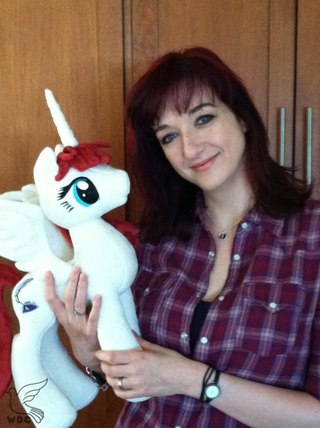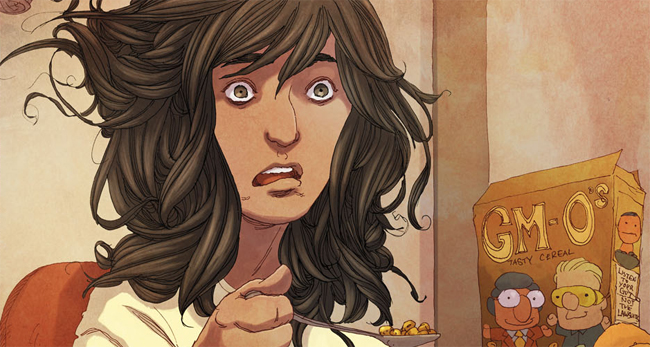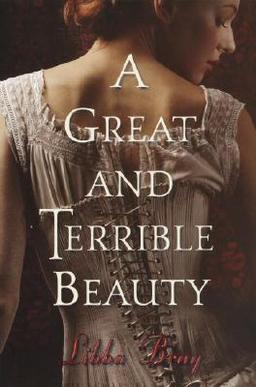
While I’ve long taken up the banner of diversity in Star Wars as one of my pet causes, I have to confess that while I’ve gone to great lengths to quantify its in-universe demographics, I’ve never really spoken up about perhaps an even more important aspect—the demographics of the people making Star Wars.
Part of it is that my sci-fi/fantasy interests have never extended much beyond SW and I’m just not familiar with a lot of female creators, and I think the other part is that—like with the lack of gay characters—the white guys have such an enormous lead that it’s hard to even know where to start.
Luckily, Star Wars’ real-world component has made some decent strides on its own in the last several years; the departures of Karen Traviss and Sue Rostoni from the publishing program were followed by the arrivals of Karen Miller and Christie Golden and Jennifer Heddle, Lucasfilm’s public face is increasingly that of women like Kiri Hart, Amy Beth Christenson, Andi Gutierrez, and Vanessa Marshall, and of course, the whole damned thing was bequeathed by George Lucas in 2012 to Lucasfilm veteran Kathleen Kennedy.
There’s still lots of room for improvement, however—notably, not a single female writer or director has yet been linked to any future SW film—and this awesome piece on women in comics over at that other “ThirtyEight” website inspired me to ask the gang for their recommendations on new female faces to join the Star Wars ranks. Here are their thoughts.
 Ben W: One name that has risen to prominence when it comes to accomplished writers or creators who happen to be women is Lauren Faust. An artist, animator and writer, Faust has been in the entertainment industry for a while, working on shows like Powerpuff Girls and Foster’s Home for Imaginary Friends, but has risen to true prominence (and near cult status) with her work on the latest iteration of the My Little Pony franchise: Friendship is Magic. The success of the shows on her resume can be directly tied toward her mission to make cartoons with positive and non-stereotypical role models for a young, female audience, in turn creating media that can be enjoyed by anyone for their quality writing and humor, not just by a target demographic.
Ben W: One name that has risen to prominence when it comes to accomplished writers or creators who happen to be women is Lauren Faust. An artist, animator and writer, Faust has been in the entertainment industry for a while, working on shows like Powerpuff Girls and Foster’s Home for Imaginary Friends, but has risen to true prominence (and near cult status) with her work on the latest iteration of the My Little Pony franchise: Friendship is Magic. The success of the shows on her resume can be directly tied toward her mission to make cartoons with positive and non-stereotypical role models for a young, female audience, in turn creating media that can be enjoyed by anyone for their quality writing and humor, not just by a target demographic.
Nearly her entire career as an animator has been geared toward demolishing the myths and cliches revolving around cartoons that are seen as stereotypical “girly” shows. She makes it a point to keep romance, for instance, to an absolute minimum in all of her shows, if not eliminating it entirely, to avoid the common tropes that it would drag into the plot. Rather, she focuses on the same things most quality cartoons do: strong characters, plots that are not nonsense and a willingness to take risks in the face of cliches.
Her biggest show is easily the best example of this. FiM fully renovated a franchise that, since its original iteration in the 1980s, had stagnated, fully content to be something only young girls (or the young at heart) enjoyed. Faust took that and turned it into Hasbro’s biggest franchise, a multimedia juggernaut that to this day has grown men and women alike following it with a fervor that frankly terrifies me. And she did this without removing stereotypical “girl’s show” elements like Aesops, songs and “power of friendship” morals. If anything, she keyed on them.
If a “girls” cartoon is to be made for Star Wars, Faust is the one to do it. She could very well create a Star Wars show or animated special geared toward a young, female audience from a marketing standpoint, but quality enough in writing and characterization for anyone to enjoy it. But if we’re dealing in the hypothetical, why pigeonhole her? Let’s give Faust an animated show all her own without any sort of target demographic and let her run wild. I highly doubt we would be disappointed.

Ben C: Until recently G. Willow Wilson was a writer known to those comic readers who would be inclined to search out something a bit different. A work like Cairo or her short-lived but excellent Vertigo series Air. She was also involved in Marvel’s very brief reviving of its Crossgen titles with Mystic. What has changed is that she’s been writing the new Ms. Marvel book with Adrian Alphona on art. It would not be an exaggeration to say it is Marvel’s best book going!
What would make Wilson’s take on Star Wars fascinating is the same thing she’s brought to all her books, but particularly so on Ms. Marvel. She could be said to be operating very much in the style advocated by Christopher Priest in an introduction to a collection of his Black Panther run, namely: If you want people to like diverse characters, make them cool to begin with and by the time people realize the character is diverse they’ll like them too much to object! Unlike Priest, who rendered Black Panther as a more remote, unknowable figure seen through the eyes of others, Wilson is able to pull this off for a teenage, female Muslim and make her the lead and have her view be the one we follow. It’s a deceptively difficult technique to pull off and she makes it look easy.
The other point Wilson excels on with the way she creates characters is that she pretty much follows the Gladiator line: “Win the crowd.” Why have so many people attached themselves to the adventures of Kamala Khan? Because Wilson renders her so damn well, well that and Alphona’s visuals. She also defies easy categorization and explores the themes of identity and integration, of emulating and finding your own way via Kamala. And she does this without the story ever veering towards being preachy.
With this in mind, why wouldn’t you want her working on SW? She’s soon to be doing an X-Men arc, she could just as easily be hired for SW! And what happens then? Chances are we get characters that charm the hell out of us, get us on their side and then, like with Ms. Marvel, we only notice those diverse aspects later and like her still more for them: “Hey, wait a sec, was that an alien or some kind of weird religion?” “Who cares? I like her.”
 Rocky: So I need to take a quick trip back to my teenage years and reading habits for this one. We know that with new Star Wars content, we’re meeting more characters who are teenage girls. And we need those authors who can really build detailed worlds and compelling, ever-twisting plots. Perhaps this could be for a young adult novel, perhaps for something building Daisy Ridley’s character before Episode VII, perhaps something set in a completely new era of SW publishing- but I think Libba Bray would be an interesting fit for the Star Wars universe. Her previous work has included fantasy/historical fiction and dark comedy- both of which could translate well into a universe whose genre is best described as ‘epic space opera.’ And we know there will be plenty of demand for books for younger and teenage readers, with generations of fans growing up on Clone Wars and Rebels.
Rocky: So I need to take a quick trip back to my teenage years and reading habits for this one. We know that with new Star Wars content, we’re meeting more characters who are teenage girls. And we need those authors who can really build detailed worlds and compelling, ever-twisting plots. Perhaps this could be for a young adult novel, perhaps for something building Daisy Ridley’s character before Episode VII, perhaps something set in a completely new era of SW publishing- but I think Libba Bray would be an interesting fit for the Star Wars universe. Her previous work has included fantasy/historical fiction and dark comedy- both of which could translate well into a universe whose genre is best described as ‘epic space opera.’ And we know there will be plenty of demand for books for younger and teenage readers, with generations of fans growing up on Clone Wars and Rebels.
Previously, Libba Bray’s work has been young-adult oriented, featured strong female characters, queer relationships that aren’t just subtext, and a complex world developed on the basis of one that has been firmly established. The framework (Victorian England) was present, and from there her created world sprang to life. The story took new twists and turns in every chapter, and a combination of red herrings and legitimate clues kept the readers guessing. A well-developed ensemble cast all fit together, and even the minor characters are given extensive background and have important roles to play. All of the plot threads are brought together in the end, leaving few loose ends but plenty of opportunity for further development. These are all themes that could translate well into many fictional universes, and would give SW books a fascinating twist.
We have entered an entirely new era of Star Wars publishing, and though we have a framework for the galaxy, there are so many details for the individual authors, artists, and directors to fill in. We know that the Star Wars audience now is very diverse, and many of us quite like having a wide array of subgenres within the greater universe. Hiring an author whose work spans several styles and has the world-building vision to fit into a complex universe would bring new depth to what we are reading, and would likely result in building more diverse characters. This is a time for experimentation for the Star Wars universe, for bringing in perhaps unlikely creators who can help fill out the large blank spaces in the timeline. Libba Bray’s detailed writing style and fascinating settings would fit nicely with SW, and might even help bring in more young readers.
 Mike: In addition to doing both covers and interiors on a variety of Marvel titles over the past few years (most notably a bang-up run on Young Avengers) British artist Jamie McKelvie has also served recently as one of Marvel’s nominal House Fashion Designers. McKelvie costume designs now grace the company’s two big-ticket “Marvels”—young Ms. Marvel Kamala Khan, and soon-to-be movie star Carol Danvers, also known as Captain Marvel—despite McKelvie not being the interior artist on either series.
Mike: In addition to doing both covers and interiors on a variety of Marvel titles over the past few years (most notably a bang-up run on Young Avengers) British artist Jamie McKelvie has also served recently as one of Marvel’s nominal House Fashion Designers. McKelvie costume designs now grace the company’s two big-ticket “Marvels”—young Ms. Marvel Kamala Khan, and soon-to-be movie star Carol Danvers, also known as Captain Marvel—despite McKelvie not being the interior artist on either series.
But gender-neutral name notwithstanding, Jamie McKelvie is a dude, so I’m not here to talk about him. No, I’m here to talk about Fiona Staples.
Many people know me as a huge fan, and booster, of Saga, Staples’ ongoing Image series with writer Brian K. Vaughan. I’ve personally turned at least ten people on to the series over the last couple years, usually by starting with four simple words: “Star Wars for adults”. In other words, Saga has all of the epic majesty of the SW universe, but with cursing and nudity and all that good stuff besides. In fact, I’ve often considered doing a “What Star Wars Can Learn From” article on Saga, but the two franchises are so similar in scope and style—while clearly serving two different age groups—that the only possible answers to that question are “everything” and “nothing”.
While I’ve been a fan of Vaughan’s for more than a decade, a huge part of Saga‘s creative success is due to Staples’ design skill. Every spaceship, planetary environment, and cityscape walks—no, dances—the line that SW trod between sci-fi and fantasy with the utmost grace and inventiveness. Even Saga‘s most bizarre alien creatures are both freakish and familiar enough to inspire empathy—and that goes for the TV-headed robots too. The costume designs, as well, often accomplish something that only the very best of SW has ever done—distinct incongruity with Earth fashion while still conveying a recognizable culture and varying in-universe senses of style.
The problem, of course, is that work of Fiona Staples’ caliber isn’t easy; Saga takes a three-month hiatus after every six-issue arc in order for her to keep up, and the last thing in the world I’d want to do is pull her away from Saga for some run-of-the-mill SW job. No, what I’d like is for Staples to become the Jamie McKelvie of SW publishing. Magali Villeneuve, Joe Corroney, and Dustin Weaver have done some great work illustrating scenes from recent novels, and John Cassaday, Terry Dodson, and Salvador Larocca are all exciting additions to the pantheon of SW comics artists, but there are going to be a lot of new characters to juggle over the next couple years and Staples’ design influence would be an enormous boon to this universe, just as McKelvie has breathed life (and attention) into Marvel characters that could have easily veered into ho-hum territory.
And hey, if Rian Johnson wanted to run some stuff by her for Episodes VIII and IX, all the better.
